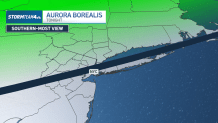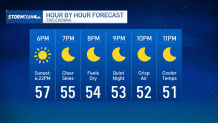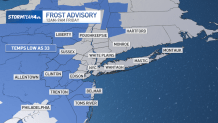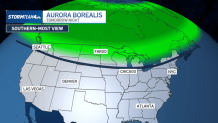Table of Contents
“`html
Exciting Aurora Forecast: A Cosmic Show from‌ the Sun!
On Tuesday, a coronal mass ejection (CME) from the sun was recorded, with its effects expected to reach Earth by Thursday. This astronomical event has the potential to spark geomagnetic storms that could enhance the visibility of the northern lights, allowing them to be seen in regions as far south as the United States.
Anticipating the Aurora: Where and When to Look
The display of the aurora borealis might stretch across many northern U.S. states, reaching parts of the lower Midwest and even extending to locations like Oregon over the coming nights.
The extent to which the aurora can be observed southward relies on the storm’s intensity. While Thursday’s geomagnetic activity is not forecasted to be as vigorous as that witnessed earlier in May—which allowed spectators along the East Coast to experience the vibrant lights—it may still illuminate the skies for those in the northern parts of the region.
Ideal Viewing Conditions for Aurora Enthusiasts
Those hoping to catch a glimpse of the aurora will be pleased to hear that atmospheric conditions are set to be nearly perfect. A dominant high-pressure system combined with dry air will keep clouds at bay, ensuring clear skies for viewers.

Additionally, the moon’s brightness should not be a major concern. A new moon ‍is typically ideal for stargazing, while a full moon can hinder visibility. On Thursday, the moon will be in its first quarter phase, resulting in some light but not enough to significantly affect the aurora viewing experience.
Maximizing Your Aurora Viewing Experience
To enhance your chances of seeing the northern lights, consider traveling further north to find a location free from artificial light pollution and with an unobstructed view of the northern horizon. Bringing along a high-quality camera can also be beneficial, as many modern cameras can capture the aurora even when it’s not visible to the naked eye.
However, prepare yourself with warm clothing! Thursday evening is expected to be the coldest night the region has experienced since April, with temperatures dipping significantly.

Cold Weather Warning: Dress Appropriately
In the city and Long Island, temperatures will hover in the 40s, while areas north and west could see temperatures drop into the 30s. The National Weather Service has even issued a frost advisory for extensive parts of the region. If you venture out, ensure you’re properly dressed to combat the chill as you gaze upward.

Final Thoughts: Don’t Miss Your Chance
By Friday night, the opportunities to witness the aurora in this region will diminish. For the best chances, you’d need to travel far upstate or even into Canada to continue your quest for the stunning northern lights.

“`


